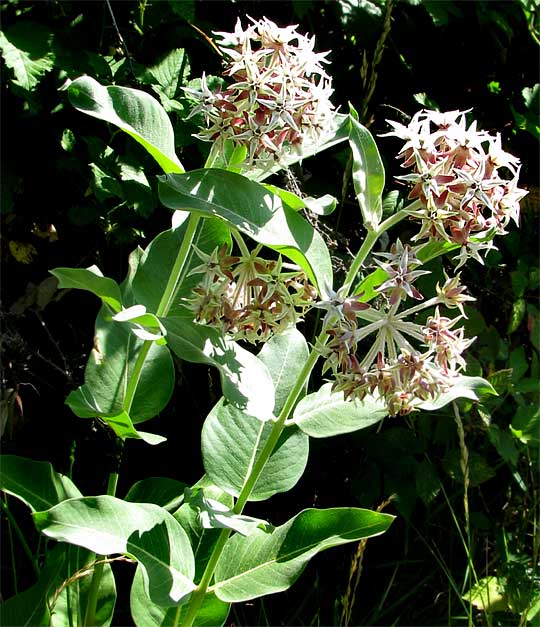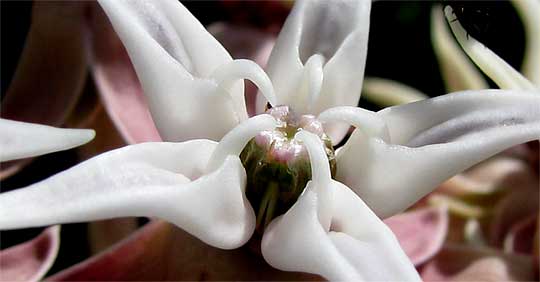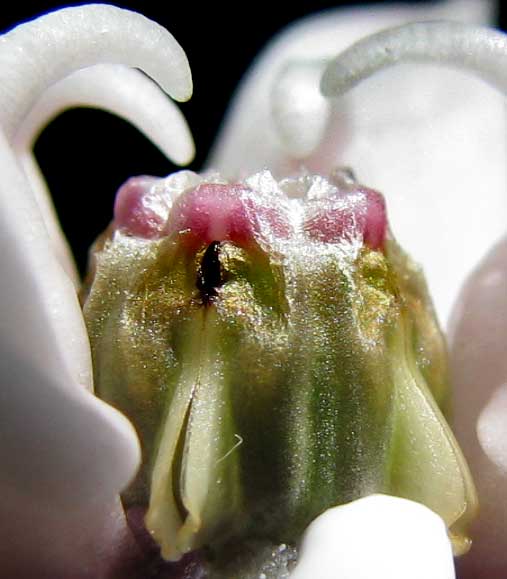Excerpts from Jim Conrad's
Naturalist Newsletter

from the the July 12, 2009 Newsletter, issued from the Siskiyou Mountains west of Grants Pass, Oregon:
SHOWY MILKWEED'S POLLINATION TRICK
In this area the common roadside milkweed seems to be the Showy Milkweed, ASCLEPIAS SPECIOSA, shown above. Though similar to the East's Common Milkweed, Asclepias syriaca, its features are in general more delicate and streamlined. The Showy is a Western species ranging eastward as far as Michigan and Illinois.

Above a close-up shows the milkweed flower's complex and distinctive anatomy, with curving "horns" arising from five "corona limbs," or "hoods" forming a circle around the "gynoecium." These are features peculiar to milkweed flowers and they're explained in more detail at http://www.backyardnature.net/fl_milkw.htm.
Milkweed flowers are exquisitely adapted for a special kind of pollination. An insect's leg catches in an ingenious trap and can't escape unless it's carrying special bags of fused-together pollen grains called pollinia, which later will be deposited on a milkweed's stigma heads. At the above link you can see pollinia on leg-ensnaring, upside-down-Y-shaped anthers.

Above the Showy Milkweed's leg trap is the pale, noselike thing at the lower left, with a shadowy slit running up its ridge. The insect foot gets caught in the wider, lower hole, then when the insect jerks the foot upward it catches more securely in the narrowing slit, and can't escape until it lifts out the upside-down-Y-shaped, pollinia-carrying anther at the ridge's top. In the picture the dark thing at the top of the slit is the gland at the base of the upside-down-Y-shaped anther. If you study the pictures on my milkweed page, all this should make sense.
Hummingbirds and butterflies crave the milkweed flowers' nectar and milkweed leaves are the food of Monarch Butterfly caterpillars. Showy Milkweed's young leaves can be eaten as greens.